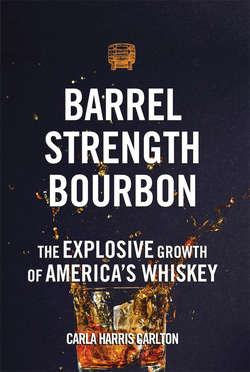Читать книгу Barrel Strength Bourbon - Carla Harris Carlton - Страница 17
На сайте Литреса книга снята с продажи.
From Famine to Feast to Famine
ОглавлениеThe growth of distilling—and of cities, for that matter—in the early 1900s was not welcomed by everyone. A new temperance movement that blamed alcohol consumption for society’s ills was gaining momentum. Women played a large role in this movement. Somewhat ironically, one of the most well-known members of the Woman’s Christian Temperance Union was a native Kentuckian. Carry A. Nation, whose first husband was an alcoholic, smashed up saloons with her famous hatchet from December 1900 until her death in 1911. Joining religious protestors were some wealthy business owners who believed that sober workers were harder workers.
Prohibition supporters got a boost when the United States entered World War I in 1917 and President Woodrow Wilson instituted a temporary wartime prohibition during which distillers could produce only industrial alcohol. That same year, Congress submitted for state ratification the 18th Amendment, which banned the manufacture, transportation, and sale—but not use—of intoxicating liquors. The amendment received the support of the required three-quarters of US states in 11 months.
The 18th Amendment was ratified on January 16, 1919, and took effect a year later. In October 1919, Congress passed the National Prohibition Act—commonly known as the Volstead Act, in reference to Rep. Andrew Volstead of Minnesota, the chairman of the House Judiciary Committee—which provided guidelines for enforcing Prohibition.
Alcohol could be legally sold only for medicinal purposes, and just six distilleries in the entire country had licenses to produce this “medicine.” Doctors could prescribe 1 pint of 100-proof whiskey per patient every 10 days. Needless to say, a lot of people fell ill in those days.
Generally speaking, the provisions of Prohibition were enforced much more strongly in rural areas, where residents tended to support them, than in urban ones. (This dichotomy continues even today in Bible Belt states like Kentucky, where, despite its prodigious bourbon production, 77 of its 120 counties were classified as dry in March 2016, according to the state Department of Alcoholic Beverage Control.) Overall, rather than curtailing distilling, Prohibition just shifted control of it to the criminal element. The 1920s saw the rise of bootleggers, speakeasies, and gangsters such as Al Capone, who reportedly earned $60 million annually from illegal operations associated with alcohol.
{ Just A SIP }
Al Capone was a frequent guest at The Seelbach Hotel in Louisville, as was Cincinnati mobster George Remus, known popularly as the “King of the Bootleggers.” Remus, who befriended writer F. Scott Fitzgerald, who was stationed with the Army at nearby Camp Taylor, was said to have inspired Jay Gatsby in Fitzgerald’s 1925 masterpiece, The Great Gatsby. Fitzgerald’s characters Tom and Daisy Buchanan were married in Louisville at “The Muhlbach.”
Prohibition cost the country lots of jobs, not just in the distilling industry but also in ancillary businesses such as cooperages, bottle manufacturers, and taverns—even farmers were affected. By the 1932 presidential election, with the country in the midst of the Great Depression, it was clear that the so-called “Noble Experiment” had failed, and candidates for both major parties promised to do away with it.
Under President Franklin Roosevelt, Congress proposed the 21st Amendment, which repealed the 18th, in February 1933, and the states ratified it in December 1933. It’s worth noting, historian Veach says, that the 18th Amendment is thus far the only amendment that limited the freedoms of American citizens—and the only amendment that has ever been repealed. It’s also worth noting that the 21st Amendment ceded control over alcoholic beverages to the states, which led to a confusing and inconsistent array of laws that still exists today.
Many distilleries never reopened after Repeal. The 1930s saw lots of consolidation as large distilling companies bought up smaller ones; it also saw the creation of one startup that would prove to be very successful: Heaven Hill, which was founded in 1935 by the Shapira brothers and which today is the nation’s largest independent family-owned and -operated distilled spirits producer.
The distilling industry as a whole had really no more than started gearing back up when the United States entered World War II and the federal government once again halted beverage alcohol production, this time so that distilleries could switch to 190-proof industrial alcohol for use in ammunition, plastics, antifreeze, and the like. After the war, Americans once again had money to spend, and distilleries cranked up production to provide them with bourbon to spend it on. The 1950s were a golden age of bourbon production in Kentucky. Distilleries started marketing their wares internationally. Special packaging became popular, notably the ceramic decanters sold by Jim Beam.
On May 4, 1964, Congress passed a resolution that declared bourbon whiskey to be “a distinctive product of the United States,” just as Scotch whisky is distinctive to Scotland or Canadian whiskey to Canada. Then, as now, Kentucky was producing the lion’s share of America’s bourbon: by 1968, there were almost 9 million barrels of it aging in warehouses in the Bluegrass.
But the times were not the only things a-changin’ in the late 1960s. So was the nation’s drink of choice. And it wasn’t bourbon.
